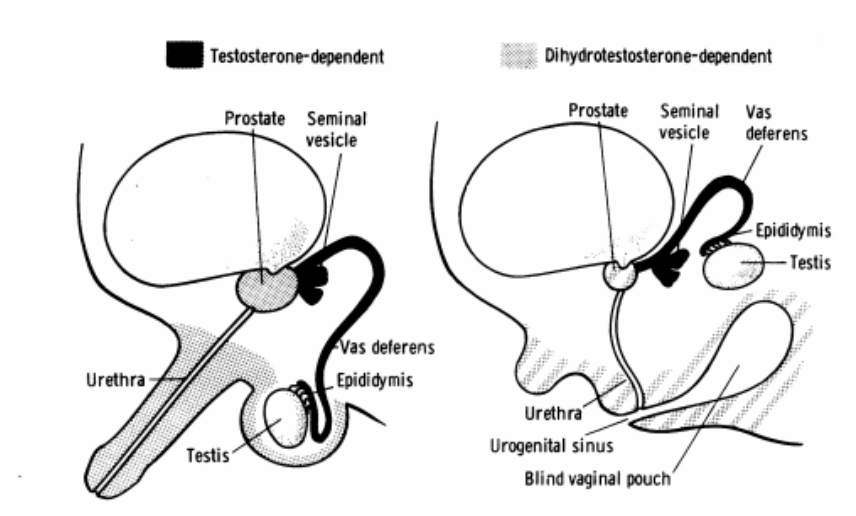Countdown to Life: The Extraordinary Making of You, a new BBC series focused on how our prenatal development shapes our lives, has brought new attention to a group of seemingly sex-swapping people in the Dominican Republic.
In an article for the BBC Magazine, Michael Mosely talks to families with children that were brought up as girls because they lacked obvious testes or a penis at birth, but grew penises and had their testicles descend when they neared puberty. The local name for these children is “guevedoces”, or “penis at twelve.” But the change they go through isn’t magic — it’s an example of how multi-layered and complex human sexual development really is.
Here’s how it works.
The condition is the result of an enzyme deficiency. Guevedoces are genetically male, and have Y chromosomes in all of their cells. Their earliest sexual development is also normal: a gene on the Y chromosome turns the undeveloped gonads of the 7 week old embryo into testes, which soon start pumping out male hormones. Two of those hormones — testosterone and Mullerian-inhibiting substance — are critical for the development of the internal male reproductive system.
Testosterone triggers the development of the male reproductive tubing: the epididymis and vas deferens. Mullerian-inhibiting substance breaks down tissues that would otherwise develop into female tissues like Fallopian tubes and the uterus. The result is a set of tubes that will carry semen from the testes to point where the urethra emerges from the bladder.

At week 10 of prenatal development, a guevedoces looks like any other male foetus. But his enzyme deficiency is about to make things confusing for his parents. Normally, an enzyme called 5-alpha-reductase-2 would convert testosterone into a hormone called dihydrotestosterone (or DHT). Where internal reproductive tissues were sensitive to testosterone alone, the tissues that form the external genitalia are instead sensitive to DHT.
In utero, guevedoces are making plenty of testosterone. But their bodies can’t turn it into DHT, and without DHT the genitals develop along female lines — as a clitoris and labia — instead of a penis and scrotum. DHT also sends the signal that tells testes to descend into the scrotum: without it, they stay tucked inside the abdomen.
When guevedoces are born, their external genitalia look more female even though their internal reproductive structures are male. They’re raised as girls. But at puberty, the testes inside their abdomens start producing large amounts of testosterone. The effect is startling.
During puberty, testosterone makes the penis and testes grow into their larger adult form. The same thing happens to the guevedoces: but since their penis starts closer to the size of a clitoris, there’s a lot more growing to do. They also develop other male characteristics such as facial hair, a deeper voice, and male musculature. And in most cases, they adapt to their newly male bodies.
[BBC Magazine [Imperato-McGinley et al. 1971 [Nguyen et al. 1991 [Widmaier at al. 2014]]
Top image from BBC Countdown to Life: The Extraordinary Making of You | Genital development from Imperato-McGinley et al. 1971
